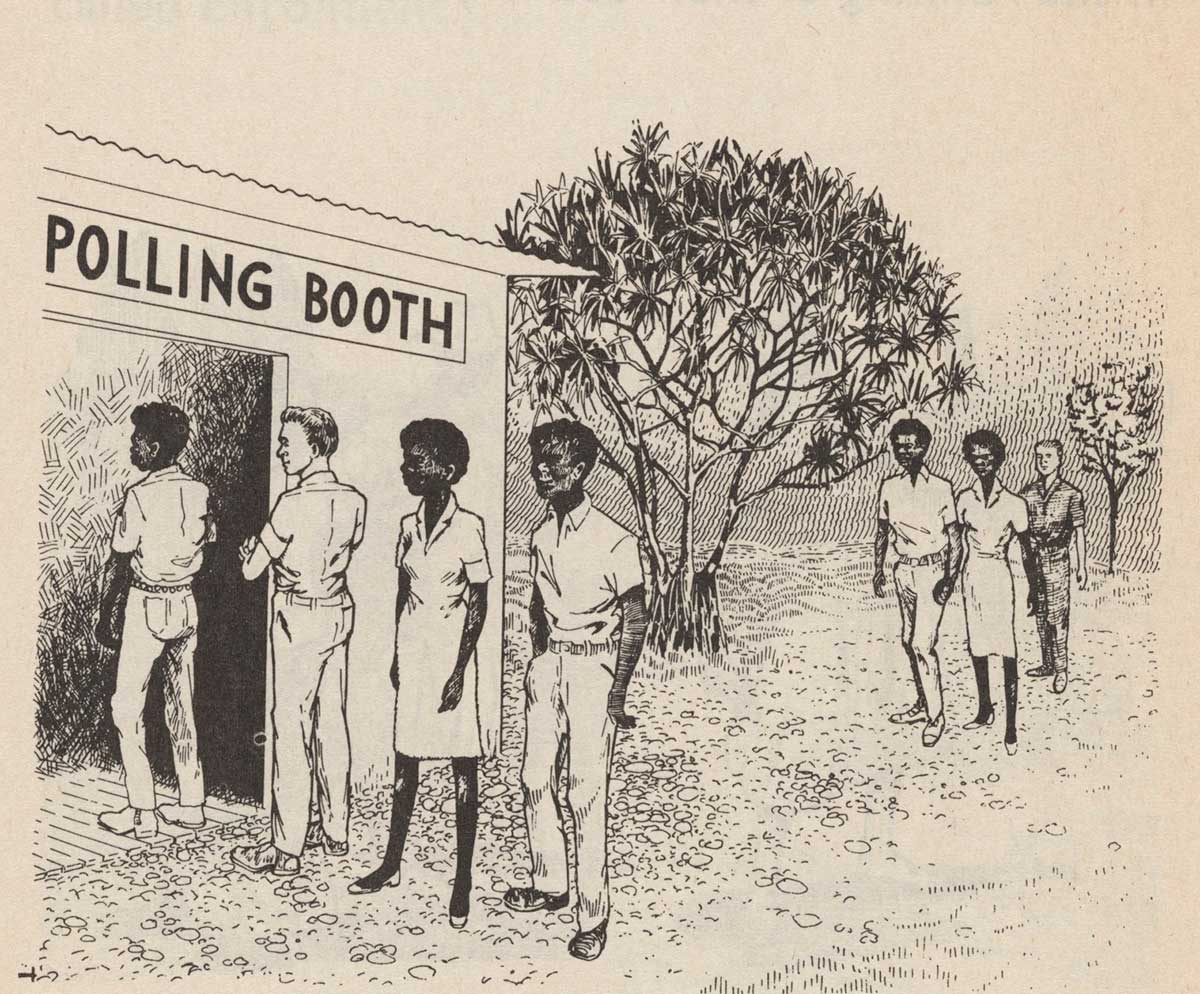Learning module:
Voting Defining Moments
Investigation 2: Getting a fair vote in Australia
2.3 Compulsory voting: does it help or hinder democracy?

You may have noticed that each time there is an election in Australia, anyone 18 years old or older in your household has to go and vote. This is something that they must do under Australian law. It is called 'compulsory voting'.
Why does this happen and when did compulsory voting begin in Australia? Do you think forcing people to vote in elections is a good idea and helps to strengthen democracy? Or do you think democracy should involve having the freedom to choose whether or not to vote in elections?
Compulsory voting is introduced in Australia
There are more than 150 democratic countries in the world. Australia is one of only 19 countries where people of voting age are made to vote. And of those 19 countries, Australia is one of only nine countries which has penalties if people do not vote.
Here is a brief summary of when and how compulsory voting was introduced in Australia. Read it and answer the questions that follow.
- In 1901, when Australia became a nation and created an Australian Parliament, voting was voluntary. It was also voluntary in all of the Australian states.
- In 1911 the Australian Parliament made all voters enrol for national elections. This meant that all voters had to be listed on an electoral register, but voting was still voluntary.
- In 1915 Queensland became the first state in Australia to introduce compulsory voting. Later voting became compulsory in all other states and territories:
- Victoria (1926)
- New South Wales and Tasmania (1928)
- Western Australia (1936)
- South Australia (1942)
- The Northern Territory (1948)
- The Australian Capital Territory (1988).
- In 1924 the Australian Parliament passed a law that made voting compulsory in national elections.
1. When was voting made compulsory in your state of territory?
| Name of your state or territory: | Year: |
|---|---|
2. When was voting made compulsory for the Australian Parliament?
Australians were made to vote in national elections for the first time in 1924.
All efforts to encourage people to vote in recent elections had failed, especially in the 1922 national election when only 58 per cent of people voted.
The bill was introduced into the Australian Parliament on 16 July 1924 and became law only two weeks later, after very little debate.
3. Which of the arguments used to support the proposed law do you think are the strongest? Put the four arguments in order from strongest to weakest, with the argument you think is strongest at the top and the argument you think is weakest at the bottom.
4. Do you think the arguments are good ones? Give reasons for your answer.
5. The bill was passed by parliament very quickly. What does that tell you about what most politicians thought about this issue at that time?
What are the arguments for and against compulsory voting today?
The law to make voting compulsory at national elections has never been changed. For almost 100 years Australian voters have had to vote in national elections or be made to pay a fine.
But from time to time there have been debates about whether voluntary voting should replace compulsory voting.
What do you think? Do you agree that voting should remain compulsory or do you think Australia should go back to voluntary voting?
6. Here are eight arguments about compulsory voting; four arguments in favour and four arguments against. Your task is to work out which ones support compulsory voting and which ones are against it. Drag and drop each argument into the correct box.
7. Which do you think is the strongest argument in favour of compulsory voting? Explain why.
8. Which do you think is the strongest argument against compulsory voting? Explain why.
9. What is your view? Do you agree with compulsory voting or do you think voluntary voting would be better? Give at least one reason for your answer.









